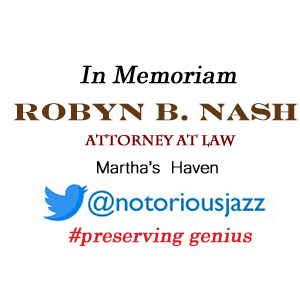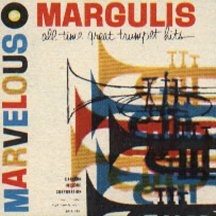
Daily Dose Of Jazz…
Charlie Margulis was born on July 24, 1903 in Minneapolis, Minnesota into a family of accomplished theater music performers in the 1920s. That was his introduction to the professional musician’s life which led to him working with territory bands led by Eddie Elkins and Paul Specht among others. Heading to Detroit, Michigan in 1924 he joined Jean Goldkette’s Book-Cadillac Hotel Orchestra under violinist Joe Venuti. His next move was to work with bandleader Ray Miller during a period when the trumpeter roamed back and forth between Detroit and Chicago, Illinois.
By 1927 Charlie began working with Paul Whiteman, the relationship lasting nearly three years and concluding in a traditional manner for progressive jazz bands, with various sidemen stranded on the West coast. He managed to straggle back to New York City, bad luck perched on his shoulder. He got so sick that he had to return to California in order to recover but by the middle of the ’30s was well enough to log in for a New York City recording session with the Dorsey Brothers.
Caught up in the excitement of the new swing style, Margulis tried out life as a bandleader as well as spending a year on tour with Glenn Miller. His role as a bandleader was offset with work in the recording studios embracing doo-wop and r&b styles. He would go on to freelance, sometimes under the name Charlie Marlowe in California, under his own name in New York City during the Forties and Fifties.
Trumpeter Charlie Margulis died on April 24, 1967 at the age of 63 in Little Falls, Minnesota.
More Posts: history,instrumental,jazz,music,trumpet
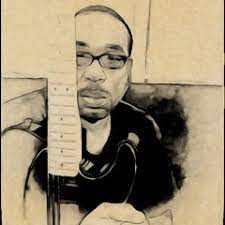
Daily Dose Of Jazz…
Kenn Smith was born Kenneth Lamont Smith on April 27, 1962 in Chicago, Illinois.
As a child of the 60s and Seventies living on the WestSide of his hometownhe first heard the sounds of Motown, Soul, Funk, Country, Jazz and Rock. His school was shows like Hee Haw and Midnight Special, his parents’ record collection, and a neighborhood filled with amateur and professional musicians.
When the family moved to the SouthSide in 1975, Smith began his guitar studies at age 13 with a visit to the local music store purchasing two Mel Bay books. Three years later the family moved to the western suburbs of Maywood, Illinois. At 16 he began classical guitar studies with guitarist Bruce Walters, and later continued studies at Jack Cecchini Studio.
While attending Proviso East High School, he played electric and classical guitar as well as timpani in the Proviso Township Orchestra, electric guitar and bass in the Proviso East High School jazz band, where he received the Louis Armstrong Award for Outstanding Jazz Improvisation during his senior year.
1982 saw Kenn beginning his career teaching guitar at Robinson’s Music Academy in Maywood, as well as performing with local funk and fusion bands. This he did while attending Columbia College of Chicago, studying music management and production. In 1987 he enrolled at the American Conservatory of Music where he studied jazz guitar and composition. In between those years of teaching, performing and study, he became an avid fan of progressive rock and fusion, developing skills as a guitarist, bassist and composer.
In 1986, he began his career as a freelance guitarist and bassist, performing on Chicago’s jazz, blues and rock scene. But it wasn’t till 1989 his professional career took off, working as a guitarist at the Chicago Cotton Club. It was here he later formed his first jazz trio and opened for jazz greats Shirley Horn, Stanley Turrentine, Freddy Cole, and Art Porter. As a jazz side man he played with other jazz greats, Jodie Christian, Guy Fricano, Johnny Frigo, Bobby Broom, Najee and many others.
He would go on tour with the Chi-Lites, start his own label Kenn Smith Music, has written, produced and recorded eight albums, as well as authored an instruction book for electric bass and numerous articles for online magazines such as Mel Bay Bass Sessions, and Bass Musician Magazine.
Guitarist, bassist, composer, educator and journalist Kenn Smith, who is well versed in many styles of music, continues to explore his music.
More Posts: author,bass,composer,educator,guitar,history,instrumental,jazz,music
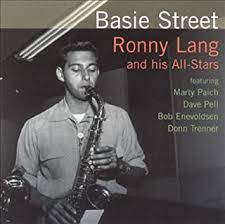
Daily Dose Of Jazz…
Ronnie Lang was born July 24, 1929 in Chicago, Illinois. Sometimes spelled Ronny, his professional début was with Hoagy Carmichael’s Teenagers. He went on to play for a year with Earle Spencer in 1946, then with Ike Carpenter, and Skinnay Ennis the following year.
Gained attention during his two tenures with Les Brown’s Orchestra between 1949–50 and 1953 to 1956, he recorded with the Dave Pell Octet in the mid-1950s. During this time he moved to California and attended Los Angeles State College of Applied Arts and Sciences studying music and woodwinds.
By 1958 he had become a prolific and busy studio musician in Los Angeles, often employed by Henry Mancini. Ronnie played the iconic sax melodic line in Bernard Herrmann’s score for the 1976 movie Taxi Driver. He also recorded with Pete Rugolo, Bob Thiele, and Peggy Lee.
Alto saxophonist Ronnie Lang, who also played flute and clarinet in the bop, progressive, big band, swing idioms, is now retired at 92.
More Posts: bandleader,clarinet,flute,history,instrumental,jazz,music,saxophone
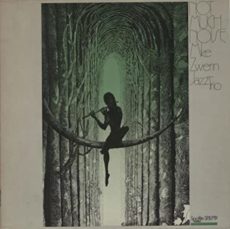
Daily Dose Of Jazz…
Mike Zwerin was born in New York City on May 18, 1930, where he studied at the High School of Music and Art. He began leading bands in his teens, employing several up-and-coming musicians. He went on to attend the Univerity of Miami and after graduation, he went into his father’s business, the Capitol Steel Corporation.
At the age of 18, while on his summer holidays from the University of Miami, he was spotted by Miles Davis at Minton’s in Harlem, while sitting in with Art Blakey. He was immediately drafted into the rehearsal band for what would become immortalized as Birth of the Cool, while the regular trombonist Kai Winding was indisposed. Also present were Gerry Mulligan, Max Roach, and Lee Konitz. His contribution, in particular, his solo on the track Move, can be heard on The Complete Birth of the Cool. A few muddy recordings exist of radio broadcasts by the band during Zwerin’s time in it, which gave him a lifelong reputation as a jazz musician lucky enough to have been at the cutting edge of a new movement.
Abandoning his musical life for much of the 1950s and after a spell in France, he returned to New York in 1958 and played the trombone in several big bands. Among his other recordings are Getting Xperimental over U, and Mack the Knife, an album of Kurt Weill songs that he produced and arranged himself. He also appears on Archie Shepp’s 1968 album The Magic of Ju-Ju.
Before moving permanently to Europe in 1969, he was a jazz critic for the Village Voice and focusing on journalism, writing for Down Beat, Rolling Stone, and Penthouse before joining the Herald Tribune. Zwerin’s move to London, England in 1969 and then to Paris, France in 1972, would be his home for the rest of his life. Nevertheless, he kept his hand in as a trombonist throughout the 1980s, working with his fellow expatriate Hal Singer and with the guitarist Christian Escoudé. In 1988 he toured with the Charles Mingus Big Band, having played briefly with the Swiss bandleader George Gruntz and played with the French fusion band Telephone.
Zwerin’s lasting claim to fame, however, is, perhaps, not his trombone playing but his book La Tristesse de Saint Louis: Swing Under the Nazis (1985). He spent two years researching it, traveling across France, Austria, Poland and Germany to interview survivors and unearthing the story of how jazz was banned by the Nazis as degenerate music, and yet somehow survived as what Zwerin called a metaphor for freedom.
Cool and progressive jazz trombonist and bass trumpeter Mike Zwerin passed away on April 2, 2010 after a long illness in Paris at the age of 79.
More Posts: bandleader,critic,history,instrumental,jazz,music,trombone,trumpet
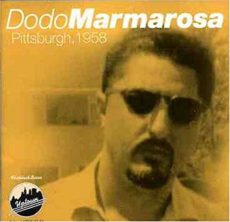
Daily Dose Of Jazz…
Dodo Marmarosa was born Michael Marmarosa on December 12, 1925 in Pittsburgh, Pennsylvania and received the uncomplimentary nickname Dodo as a child because of his large head, short body, and bird-like nose. He began taking piano lessons at the age of 9, receiving classical music lessons, but was influenced by the jazz playing of Art Tatum, Teddy Wilson, and others after fellow pianist Erroll Garner, four years his elder, introduced him to their music. Attending Peabody High School, he practiced a lot, until his left and right hands were equally strong.
Beginning his professional career in 1941 by joining the Johnny “Scat” Davis orchestra at the age of 15, he followed this stint with Gene Krupa around the end of 1942. After Krupa’s orchestra broke up he played in Ted Fio Rito’s band then moved to Charlie Barnet’s big band. He recorded debut was with Barnet in 1943 with “The Moose”, on which the 17-year-old pianist played, combining bebop and Count Basie-style minimalism. Marmarosa recorded some trio tracks with Krupa and DeFranco in 1944. He then worked with Tommy Dorsey and appeared in the MGM film Thrill of a Romance. After Dorsey he joined Artie Shaw’s big and small bands.
From the early 1940s Dodo had searched for and experimented with advanced progressive forms of jazz and became attracted to bebop after meeting and jamming with Dizzy Gillespie and Charlie Parker. In 1945 Marmarosa moved to Los Angeles, California and played piano on Parker’s first recordings for Dial Records. For the next two years he recorded extensively as a sideman in both bebop and swing contexts with Wardell Gray, Lionel Hampton, Mel Tormé, Willie Smith, Lester Young, and, became the house pianist for Atomic Records, Slim Gaillard and Barney Kessel.
Making his first recordings as leader in 1946, with trio tracks that included Ray Brown on bass and Jackie Mills on drums, and in a quartet with adding saxophonist Lucky Thompson, he also recorded his only vocal track, I’ve Got News for You, in the same year. He would go on to lead the first pizzicato jazz cello sessions for Dial with Harry Babasin on cello and Jackie Mills on drums.
The Fifties were not particularly productive, suffering from psychological problems and his family getting him no help, his behavior became erratic with him disappearing for weeks at a time. He recorded an Argo Records trio session in 1962 released as Dodo’s Back!, and made his final studio recordings that same year with saxophonist Gene Ammons and another with trumpeter Bill Hardman. His last public performance was contributed to his diabetes somewhere between the late Sixties to early to mid Seventies, leading to his permanent retirement.
Living in obscurity for the rest of his life, pianist, composer and arranger Dodo Marmarosa, who played in the bebop, modern, progressive and swing genres, passed away of a heart attack on September 17, 2002, in a veterans’ hospital in his hometown of Pittsburgh.
More Posts: piano



